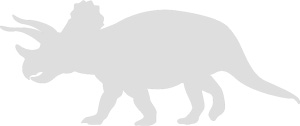Every month, 100,000 readers use the Dinosaur Database, but we receive no support from you. Developing and updating the database requires a lot of work. If you want it to remain open and be updated, please support us via the "Buy us a coffee" button available on every page or via the Support page.
Dinosaur: Sasayamagnomus saegusai

| Length*: | 74 cm | 2.4 ft |
| Weight*: | 2.8 kg | 6 lb |
*The largest known specimen
Period
Epoch: Early Cretaceous
Stage: Early-Middle Albian
Years: 113–100.5 Ma
Details
Status: valid
Author: Tomonori et al.
Year: 2024
Distribution
Area: Asia
Country: Japan
Region: Hyōgo
Formation: Ohyamashimo
Description
Sasayamagnathus saegusai
Sasayamagnathus saegusai is a small ornithischian dinosaur from the Early Cretaceous period, approximately 113–100.5 million years ago. Discovered in the Sasayama Group of Hyogo Prefecture, Japan, this dinosaur adds to the diversity of early ornithischians known from Asia. The genus name, Sasayamagnathus, combines “Sasayama,” referring to the locality where the fossils were found, and “gnathus,” meaning “jaw,” in reference to the distinctive features of the jaw. The species name, saegusai, honors Dr. Haruo Saegusa, a Japanese paleontologist who has made significant contributions to the study of Japanese dinosaurs.
Physical Characteristics
Sasayamagnathus saegusai is known primarily from partial jaw material, including a nearly complete left dentary (lower jawbone) and several teeth. The dentary has a distinctive elongated and slender shape, suggesting that it belonged to a small ornithischian dinosaur, likely less than 1 meter (3.3 feet) in length. The teeth are relatively small and leaf-shaped, with a primary ridge on each tooth crown, indicative of a herbivorous diet.
The presence of a well-developed coronoid process (a raised area on the jaw for muscle attachment) indicates that Sasayamagnathus had strong jaw muscles, which would have been useful for processing tough plant material. The jaw’s morphology also shows a slight curvature, suggesting a more complex chewing mechanism than some other early ornithischians, allowing it to grind or shear food more effectively.
Diet and Feeding Habits
Sasayamagnathus saegusai was likely a herbivore, feeding on low-lying vegetation such as ferns, cycads, and early flowering plants. The small, leaf-shaped teeth with wear patterns indicate it was adapted for cutting and shredding plant material. The strong jaw muscles, as inferred from the robust coronoid process, suggest it had a relatively powerful bite for its size, enabling it to process a variety of plant materials, including tougher vegetation.
Given its small size, Sasayamagnathus may have been a selective feeder, focusing on tender shoots, leaves, and possibly seeds or fruits. Its dental morphology indicates that it could handle different types of plant material, which would have allowed it to adapt to varying environments and food availability.
Habitat and Distribution
The fossils of Sasayamagnathus saegusai were discovered in the Lower Cretaceous deposits of the Sasayama Group in Hyogo Prefecture, Japan. This region, during the Early Cretaceous, was characterized by a warm and humid climate with extensive forests, river systems, and floodplains. The sedimentary environment suggests a mix of freshwater and terrestrial habitats, providing a range of resources for small herbivorous dinosaurs like Sasayamagnathus.
The presence of diverse plant life, such as conifers, ferns, and early angiosperms, would have provided ample food resources for small herbivorous dinosaurs. The geological context suggests that Sasayamagnathus lived in a dynamic environment, with changing water levels and seasonal variations, allowing it to exploit different ecological niches.
Behavior and Social Structure
There is limited evidence for the specific behavior of Sasayamagnathus saegusai due to the fragmentary nature of the fossils. However, as a small herbivorous dinosaur, it may have been relatively solitary or lived in small groups, which would have helped reduce predation risk and increase foraging efficiency. The jaw and teeth suggest it was well-adapted for a herbivorous diet, likely foraging on low vegetation and possibly exhibiting some level of selectivity in its diet.
Its small size and inferred agility suggest it could have moved quickly to escape predators or navigate through dense vegetation. There is no direct evidence of nesting or parental care, but like many small ornithischians, it may have laid eggs in hidden nests and provided some level of care to its young.
Discovery and Research
Sasayamagnathus saegusai was described based on fossils discovered in the Sasayama Group in Hyogo Prefecture, Japan. The fossils, which include a partial left dentary and teeth, were first identified in 2022. The unique features of the jaw and teeth led to the establishment of a new genus and species, highlighting the diversity of early ornithischian dinosaurs in Asia.
Research on Sasayamagnathus focuses on understanding its phylogenetic relationships within the broader context of ornithischian evolution. Comparisons with other ornithischians from Asia and other continents aim to clarify its position in the dinosaur family tree and its role in the early Cretaceous ecosystems of Japan. Ongoing studies also seek to explore the paleobiogeographic patterns of ornithischians and their dispersal across different landmasses during the Early Cretaceous.
Significance and Interesting Facts
Sasayamagnathus saegusai is significant as it represents a new and unique addition to the diversity of small ornithischian dinosaurs in Asia. Its discovery contributes to the understanding of the evolution and distribution of herbivorous dinosaurs during the Early Cretaceous, particularly in a region where dinosaur fossils are relatively rare. The unique morphology of its jaw and teeth also provides insights into the dietary adaptations and ecological niches occupied by early ornithischians.
An interesting fact about Sasayamagnathus is that it provides evidence of a distinct lineage of small ornithischians that existed in Japan, separate from those known in other parts of Asia. This adds to the growing understanding of the complex biogeographic history of dinosaurs and the diverse ecosystems they inhabited during the Cretaceous period.
Sources
Material: At least 2 individuals (skull fragments, coracoid and tibia).
References: Tanaka, Tomonori; Chiba, Kentaro; Ikeda, Tadahiro; Ryan, Michael J. (2024). "A new neoceratopsian (Ornithischia, Ceratopsia) from the Lower Cretaceous Ohyamashimo Formation (Albian), southwestern Japan".



